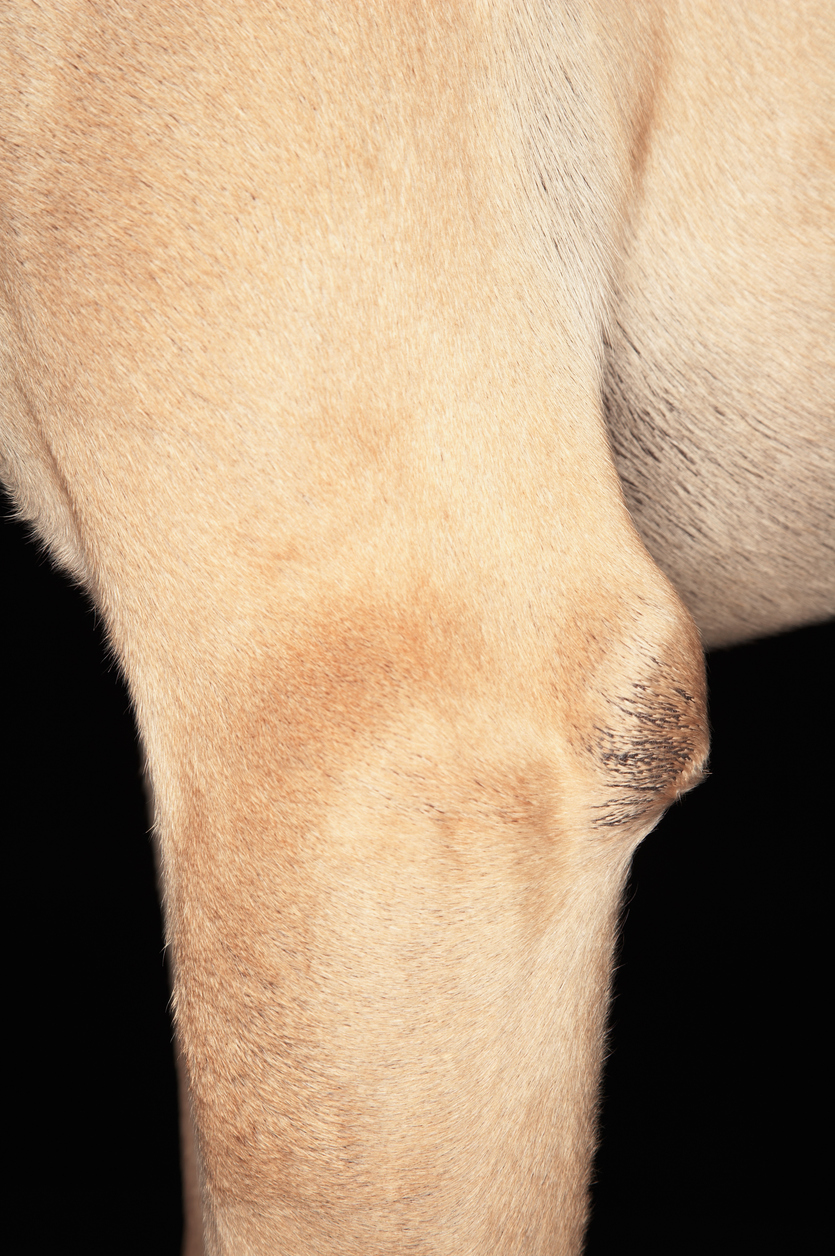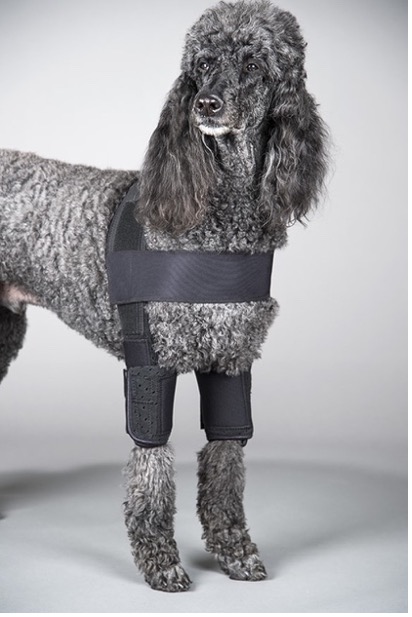Laurie's Blogs.
Aug 2025
Conservative Management of Elbow Hygromas in Dogs
Last week’s dive into the veterinary research regarding elbow hygromas led to a veterinary surgeon reaching out to say that she would never operate on an elbow hygroma as a first line of treatment. Fantastic! So, that sparked part two of the elbow hygroma blogs. This article explores non-surgical strategies for managing elbow hygromas in dogs, including environmental modifications, protective devices, and supportive therapies.
Understanding Elbow Hygromas
Elbow hygromas are fluid-filled sacs surrounded by a dense fibrous capsule, typically forming over bony prominences like the elbow due to repeated pressure or trauma. They are most prevalent in large breeds such as Great Danes, German Shepherds, Labradors, Mastiffs, and Rottweilers, particularly in adolescents (6–18 months) or older dogs with conditions like elbow osteoarthritis. The condition arises from an inflammatory response to chronic pressure, creating a protective "pillow" of serous fluid. While initially painless, untreated hygromas can grow, harden, or become infected, leading to complications such as ulceration or abscesses.
Early intervention is critical. Small, uncomplicated hygromas can often resolve within two to three weeks with appropriate management, whereas larger or chronic lesions may require more intensive care to prevent recurrence or infection.

Image: A dog with a visible elbow hygroma, showing a soft, fluid-filled swelling over the elbow.
Non-surgical management focuses on eliminating the underlying cause—repetitive trauma—and supporting the healing process.
1. Environmental Modifications
The cornerstone of non-surgical treatment is reducing pressure on the elbow by modifying the dog’s resting environment. Hard surfaces like concrete, tile, or hardwood floors exacerbate hygroma formation, particularly in dogs that frequently lie down or "plop" onto these surfaces.
• Soft Bedding: Provide thick, padded bedding to distribute the dog’s weight evenly and cushion bony prominences. Orthopedic foam beds or memory foam mattresses are ideal for large breeds. For dogs reluctant to use beds, interlocking foam flooring tiles (similar to those used in gyms or daycares) can be placed in preferred resting areas.
• Weight Management: Maintaining a healthy body weight is crucial, as excess weight increases pressure on the elbows. Veterinary professionals should assess the dog’s body condition score (BCS) and recommend dietary adjustments if necessary.
2. Protective Devices
Specialized elbow pads or protective sleeves are highly effective in shielding the elbow from further trauma and promoting healing. These devices provide a cushioned barrier, reduce pressure, and maintain warmth to improve circulation.
• DogLeggs Standard Length Adjustable Elbow Pads: These are specifically designed for elbow hygromas, offering thick padding, breathable 4-way stretch fabric, and Velcro fasteners for a secure, adjustable fit. The design includes a chest strap to prevent slipping and allows air circulation to keep the joint warm, aiding healing. DogLeggs can be curative for small hygromas, eliminating the need for invasive procedures like drainage or surgery.
• Customized Foam Noodle Padding: The pool noodle elevates the limb off the floor to prevent abrupt or traumatic compression along the pressure point. Because the noodle is placed only along one side of the region experiencing pressure, it does not apply 360-degree compression of the tissues and therefore does not obstruct blood flow all the way around the affected area. Secure the noodle and stockinette in place with Velcro straps, Velcro tape, or adhesive elastic tape.

Image: A dog wearing DogLeggs elbow pads, demonstrating proper fit and padding over the elbows.

Image: Customized supportive padding, designed to elevate the limb off the floor. Created with a water noodle, Velcro straps, and stockinette.
3. Supportive Therapies
Adjunctive therapies can enhance healing, reduce inflammation, and improve comfort, particularly for larger or chronic hygromas.
• Canine Rehabilitation and Massage: Veterinary rehabilitation therapists can guide owners in massage techniques to improve blood circulation, reduce inflammation, and alleviate discomfort.
• Cold Laser Therapy (Photobiomodulation): This non-invasive treatment promotes tissue healing and reduces inflammation. It’s particularly effective for small to medium-sized hygromas.
• Extracorporeal Shock Wave Therapy (ESWT): A novel approach, ESWT has shown promise in managing canine elbow hygromas by stimulating tissue repair.
4. Monitoring and Veterinary Oversight
Regular veterinary follow-up is essential to monitor hygroma size, detect early signs of infection (e.g., warmth, discharge, or pain), and adjust the treatment plan.
Conclusion
Non-surgical management of elbow hygromas in dogs is highly effective when initiated early, focusing on eliminating repetitive trauma through environmental modifications, protective devices, and supportive therapies. Products like DogLeggs, when combined with therapies such as cold laser and rehabilitation, offer practical solutions to promote healing and prevent recurrence.
References
• The Spruce Pets. (2025). Elbow Hygromas in Dogs. Retrieved from https://www.thesprucepets.com/elbow-hygroma-in-dogs-4691881
• Veterinary Partner. (2024). Elbow Hygromas in Dogs. Retrieved from https://veterinarypartner.vin.com/default.aspx?pid=19239&catId=254100&id=4952595
• Merck Veterinary Manual. (2025). Hygroma in Dogs. Retrieved from https://www.merckvetmanual.com/integumentary-system/hygroma-in-dogs/hygroma-in-dogs
• Clinician’s Brief. (2020). Coaptation Devices for Elbow Hygromas. Retrieved from https://assets.ctfassets.net/4dmg3l1sxd6g/ITFpd7jvRs6jCBRBEH0Mc/f4e7219988a8f98c68c693ea17f54697/CoaptationDevicesforElbowHygromas.pdf
• DogLeggs. (2023). How Do You Treat an Elbow Hygroma in Dogs? Retrieved from https://www.dogleggs.com/blog/how-do-you-treat-an-elbow-hygroma-in-dogs/
• Walkin’ Pets. (2024). Hygroma in Dogs: Treatment, Prevention, and Solutions. Retrieved from https://www.walkinpets.com/blogs/blog/hygroma-treatment-prevention-in-dogs


